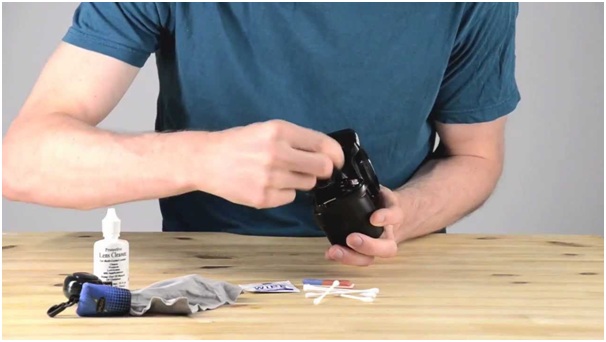
My official advice is simple: don’t get the sensor dirty in the first place and, if you do, get it professionally cleaned. Even if you’re only a keen amateur, it’s well worth the expense of a professional clean every year or so to keep your investment in good working order.

That said, if you’re reading this you’ve probably already decided to ignore my advice and have a go at cleaning your sensor yourself. So, in this article, we’ll be looking at a few of the different techniques for doing just that and some of the key points to remember.
General Hints and Tips
– If you have a recent Canon DSLR, you can almost certainly ignore this article as your camera already cleans it’s sensor automatically every time you turn it on. The camera uses very high-frequency vibrations to shake any debris from the sensor aided by anti-static coatings which hopefully repel dust in the first place.
– Always make sure you have a fully charged battery before trying to clean your camera’s sensor. This is because you need power to keep the mirror up and out of the way.
– Only ever use proper, purpose-made cleaning products which were manufactured for the purpose in a clean environment and sealed for protection. As this writer for All Things Photography found out, dirty cleaning equipment will only make matters worse.
– Never use canned or compressed air to clean a sensor directly. The force, propellant and low temperature will cause irreparable damage to the sensor and related electronics.
Doing the Deed
Professional photographers such as Bournemouth wedding photographer http://www.nickrutterphotography.co.uk/ all have their own sensor cleaning routines, and it’s fair to say that the actual task is not technically challenging although it can be fiddly.
Above all, remember to be slow and be gentle. You should always start with the least invasive and softest option to avoid any possibility of damage to the sensor before trying other methods if you haven’t managed to get things clean.
This means starting off with a blower or vacuum, which are perfect for removing loose dust and debris. If that is not effective, you can move on to options such as brushes and then ultimately a wet swab if there is no alternative.
